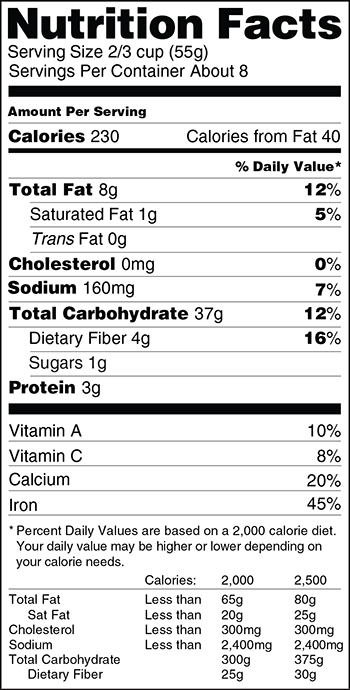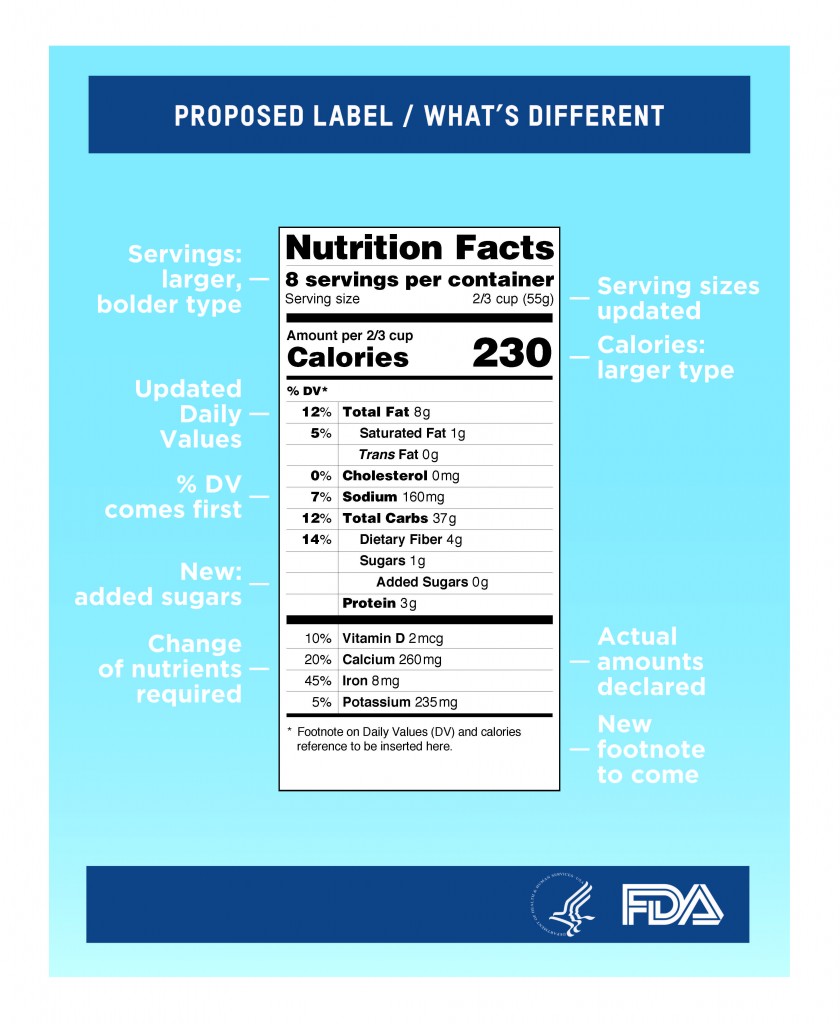Small print on food labels magnified

Photo: eltpics
The FDA released their newly proposed Nutrition Facts label for packaged foods last Thursday. It’s the first significant update in 20 years. The new labels are intended to make more sense to consumers and help us all become more aware of what we’re putting into our bodies.
There are a variety of changes, but the two most significant are the requirement to list added sugars on food labels and to update serving sizes to better reflect what people actually eat and drink. How many times have you polished off a “single” bag of chips only to realize in horror that you really had 3.5 servings? And, individual sugar consumption is now more than 22 teaspoons (around 88 grams) per day. That’s about 15 teaspoons more than the American Heart Association recommends. It’s also about 3 ½ candy bars a day…or 8 chocolate donuts worth of sugar!
Understanding nutrition labels is important for our heath. According to the Centers for Disease Control (CDC) more than a third of Americans are considered obese and less than half of us get enough physical activity. States with the highest overall obesity rates include Mississippi (36%), Louisiana (33%) and Alabama (32%). New York State’s overall rate is 25%, but it might surprise you to learn that four counties in the North Country have the highest rates of obesity in the state—rates that more closely align with Alabama and Louisiana. Thirty-two percent of adults 20 and over in St. Lawrence, Herkimer, and Jefferson counties are obese (Body Mass Index ≥ 30) and Oswego county has the highest obesity rate in the state at 34%. Rates like this place us at greater risk of high blood pressure, type 2 diabetes, heart disease, stroke, infertility and cancer.
Here’s what the proposed label looks like: And, the current label:
There will be a 90 day public comment period on the proposed changes before the final rules are issued by the FDA. The final rules are expected to take effect 60 days after they are published in the Federal Register. Industry will have two years beyond the effective date to comply.
The takeaway from all of this—get informed and get moving! Do you know your Body Mass Index (BMI)? It doesn’t measure body fat directly, but BMI is a good screening tool to help you identify potential weight problems. Calculate yours now: http://1.usa.gov/1dSzT3p.
References:
- U.S. Food and Drug Administration
- Centers for Disease Control and Prevention
- Robert Wood Johnson Foundation in collaboration with the University of Wisconsin Population Health Institute
- American Heart Association
- World Health Organization
- Gallup












Any likelihood that the older less understandable nutritional facts labels were orchestrated by the food conglomerates via their lobbying minions precisely to comply with a law that they were unable to prevent the passage of and yet convey as little information to the consumers as possible. The lobbying effects are evident in this latest rendition of the law from the point of view of foot dragging to accommodate it. Ninety days of public comments (during which time the food industry will work feverishly to hijack public opinion concerning the value of clarity in labeling) an additional 60 days to work on the “law makers” to further reduce the onerousness of the clarity in labeling law and then two years to comply with whatever is left of the law after all of the lobbying efforts are completed.
I reckon the two years to comply is so as to not waste any of the investment in the current labels they are feverishly having printed as we speak, likely justified to the “law makers” as a function of “lead time”. I wonder if the folks who print the few remaining magazines and newspapers in the US; but, more pertinently all of the advertizing flyers could give them a few pointers about the wonders of computerized printing mechanizations?